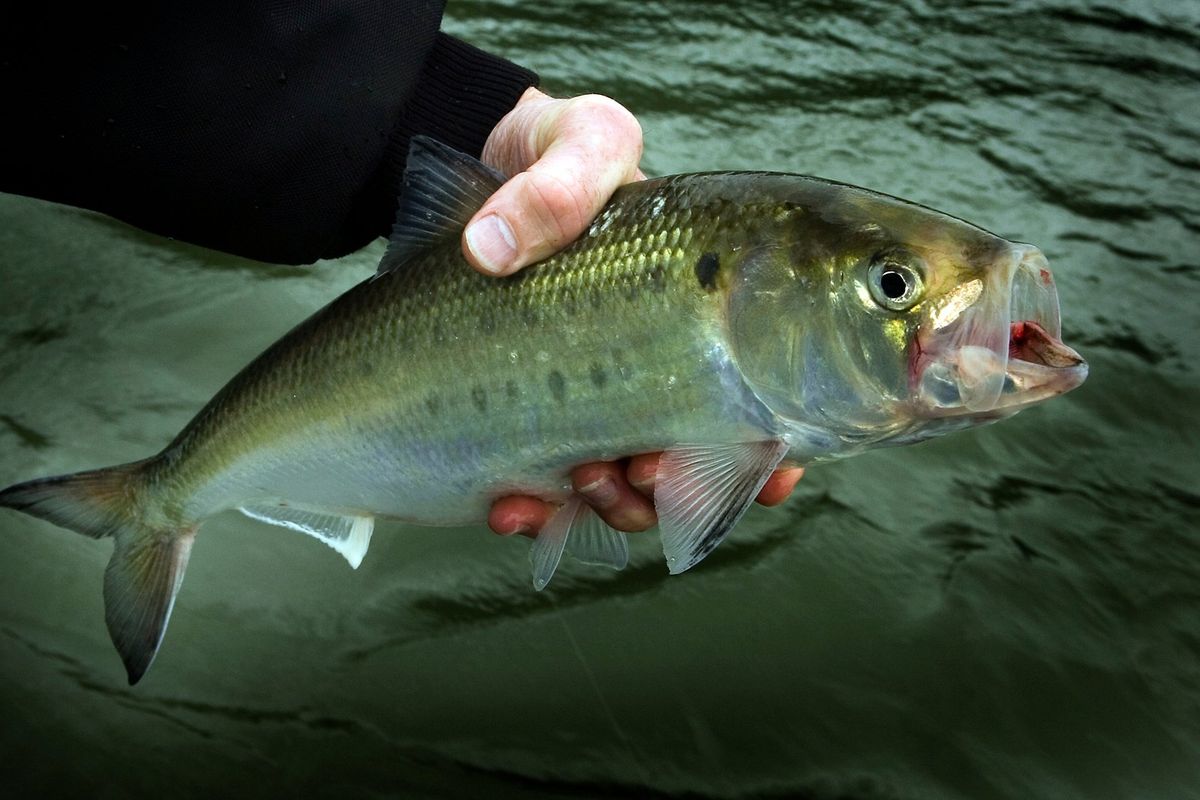The shad hoard: Is the proliferation of a nonnative fish in the Columbia River harming native salmon?

On any given day at Bonneville Dam on the Columbia River, the most common fish fighting its way up the dam’s fish ladders is a silvery member of the herring family.
In fact, during some years nonnative shad, which were first introduced to the West Coast in the 1880s, make up more than 90% of recorded upstream migrants, according to an Independent Scientific Advisory Board report to the Northwest Power and Conservation Council published in November.
That reality has raised questions about how, or if, shad are impacting native steelhead and salmon, two ocean-going species whose populations have plummeted in recent decades.
“We want to know whether the shad are in some way contributing to salmon and steelhead declines,” said John Epifanio, the lead author of the report. “Or alternatively, are they just simply taking advantage of some changes in the ecological conditions in the basin itself and out in the ocean?”
The report doesn’t offer a conclusive answer to whether shad are hurting salmon, although it does highlight how a changing climate and disrupted ecosystem can favor one species while hurting another.
In the case of shad, it’s likely that they’re taking advantage of a number of things, Epifanio said.
First, dams on the Columbia River have slowed down the flow of the water, which has in turn led to warmer water. Shad can survive a wider range of temperatures than salmon. Unlike salmon, they do not build protective nests (known as redds). Instead, their gametes (combination of sperm and egg) are dispersed into the river with eggs and hatchlings passively float downriver along with currents.
Finally, the hydropower system appears to help shad, at least in some cases. Before 1960, there were fewer than 20,000 adult shad per year at Bonneville Dam. After The Dalles Dam was built, their numbers rose to 1 million a year.
Epifanio said that increase is likely because The Dalles Dam flooded Celilo Falls, previously a barrier to the upstream migration of shad. Since then, shad numbers have increased at an average rate of about 5% per year.
“We are looking at a population growth rate that is … almost doubling every 10 years,” he said.
That’s a troubling trend. What’s more, the abundance of shad has increased farther up the Columbia River system and into the Snake River, said Jay Hesse, the director of biological services for the Nez Perce Tribe’s Department of Fisheries Resources Management. Biologists have seen increased numbers of shad above Lower Granite Dam, he said.
“We are concerned about the impacts that they may have on the native ecology and particularly our efforts to restore healthy and harvestable salmon population,” he said.
The science board’s report found several ways in which shad could be negatively impacting salmon, but the report did not establish a “direct causal link,” Epifanio said.
Shad may be competing with salmon for food and nursery habitat. It’s possible the increased number of shad is supporting a larger-than-normal avian predator population, which could lead to more predation of salmon and steelhead.
It’s not necessarily all negative. There have been reports of steelhead eating shad and Hesse said migrating shad bring much-needed nutrients to northern watershed.
Direct ecological impact aside, for the Nez Perce, other tribes and nonindigenous anglers, it’s also a question of culture and tradition.
“We’re a salmon people, not a shad people,” said Anthony Capetillo, the aquatic invasive species biologist for the Nez Perce tribe.
On the East Coast, shad are a popular (and valuable) fishery, which is why they were introduced on the West Coast in the 1880s.
The East Coast shad population is in decline. Tribal managers tried to jump-start a commercial shad fishery in the early 2000s, said Stuart Ellis, the harvest management biologist for the Columbia River Inter-Tribal Fish Commission.
Shad are a tasty fish, although bonier and oilier than salmon. That’s perhaps part of the reason commercial and recreational fishing hasn’t taken off, he said, although recreational fishing for shad has increased in recent years.
“Out here in the West, people don’t have a connection to shad,” he said. “But they are a fine fish to eat.”
Ellis and other managers see increasing the social appetite for shad angling as one option for controlling the population and urge further research into the dynamics between shad and native ocean-going fish.
“These emerging issues and potential risks warrant increased attention by resource managers in the Columbia River Basin to address uncertainties about possible shad effects on declining native species and to cultural practices,” the report concludes.
CORRECTION: Due to a reporter’s error the agency that conducted the report was misstated. The report was completed by the Independent Scientific Advisory Board rather than the Northwest Power and Conservation Council. The story has been updated.